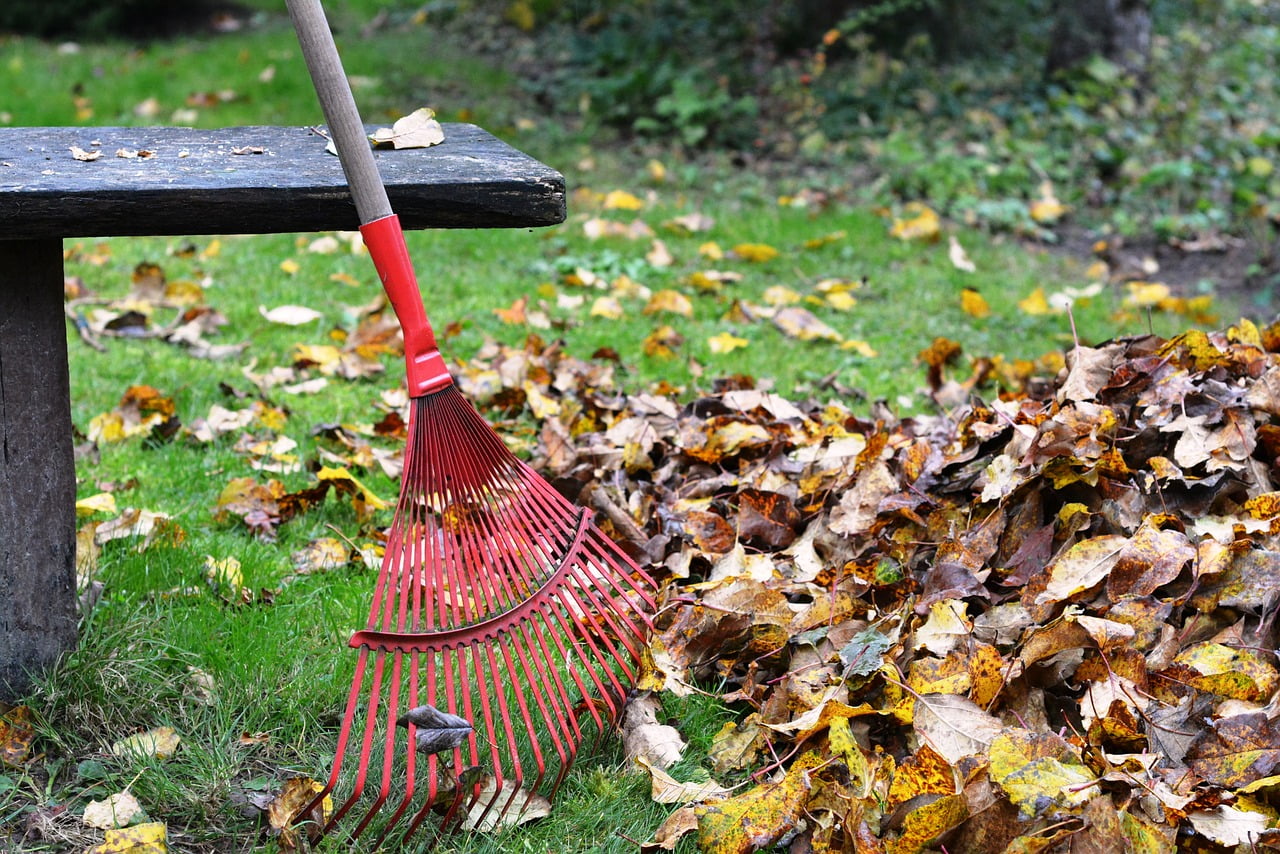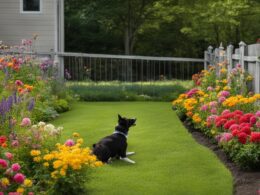Welcome to our comprehensive guide on native plants in Sacramento. If you’re looking to enhance your garden and embrace the beauty of local flora, you’re in the right place! Native plants are the perfect choice for Sacramento gardens due to their ability to thrive in the local climate and their numerous benefits for both your garden and the environment.
By incorporating native plants into your garden, you can create a low-maintenance oasis that attracts pollinators, conserves water, reduces the need for pesticides and fertilizers, and supports the local ecosystem. Whether you’re a seasoned gardener or just starting out, native plants offer a sustainable and visually appealing solution.
In this guide, we have curated a selection of nine native plants that are particularly well-suited for Sacramento gardens. From eye-catching perennials to versatile evergreen shrubs, we have the perfect recommendations to make your garden flourish.
So, let’s dive in and discover the wonders of native plants in Sacramento. Get ready to transform your garden into a vibrant and eco-friendly space that will be the envy of your neighborhood!
Benefits of Native Plants in Sacramento Gardens
Native plants in Sacramento gardens offer several benefits. They are low-maintenance and well-adapted to the local climate, making them a suitable choice for drought-prone areas. These plants also attract pollinators such as butterflies and bees, contribute to the reduction of pesticides and fertilizers, and provide food, shelter, and egg-laying sites for local wildlife. Additionally, native plants are often drought-tolerant, requiring less water once established. By planting native plants, you can contribute to the overall health of the local ecosystem.
California Fuchsia – A Beautiful and Hardy Perennial
When it comes to adding beauty and resilience to your Sacramento garden, the California fuchsia is an excellent choice. This native plant is known for its striking scarlet, trumpet-shaped flowers that bloom from summer through fall, adding a vibrant touch of red to your landscape.
One of the standout features of the California fuchsia is its low-maintenance nature. As a drought-tolerant plant, it can survive in Sacramento’s climate with minimal watering, making it an ideal choice for those looking for low-maintenance plants that can thrive even in dry conditions.
Not only is the California fuchsia a hardy and resilient perennial, but it also attracts hummingbirds, adding life and movement to your garden. These beautiful birds are drawn to the nectar-rich flowers of the California fuchsia, making it an excellent choice for wildlife enthusiasts.
The California fuchsia is not only aesthetically pleasing but also an environmentally friendly option. As a native plant, it contributes to the preservation of local ecology by supporting the native wildlife and pollinators in your area.
In addition to its beauty and eco-friendliness, the California fuchsia is fire-resistant and can withstand cold temperatures, making it a reliable choice for Sacramento gardens. With a height of up to 1 ½ feet and a spread of 3 feet, this low-lying perennial is a versatile addition to any garden, whether you have a small space or a larger landscape to work with.
Enhance your garden with the beauty and resilience of the California fuchsia. This low-maintenance, drought-tolerant plant will not only bring vibrant color to your landscape but also support the local ecosystem and attract hummingbirds with its nectar-rich flowers. Embrace the natural beauty of native plants and create a garden that thrives in Sacramento’s climate.
Coffeeberry – A Versatile Evergreen Shrub
Coffeeberry, also known as Frangula californica, is an evergreen shrub that is native to California. It is a versatile plant that offers red berries, which are a favorite treat for birds. Coffeeberry is described as “beautiful and easy to grow” by the California Native Plant Society. It can grow up to 15 feet tall and wide, so it requires ample space. This plant thrives in full sun or partial sun and requires watering twice per month once established. It can tolerate various soil types, but some species prefer specific soil conditions.
Manzanita – A Dramatic and Sculptural Addition
Manzanita is a native shrub/small tree that can make a dramatic and sculptural addition to Sacramento landscapes. Common manzanita, also known as Whiteleaf manzanita, features small white flowers and berries that deepen in color over the summer season. It is visually interesting with its reddish-colored branches. For smaller spaces, low-growing manzanitas such as Carmel Sur manzanita, Emerald Carpet manzanita, Wayside Monterey manzanita, and John Dourley manzanita are recommended. These plants are ground covers that add pops of color to the garden.
When strategically placed in your garden, manzanita can serve as both a focal point and a ground cover, adding texture and visual interest. Its unique sculptural quality creates a natural centerpiece that complements a variety of garden styles. Whether you have a small urban garden or a larger suburban landscape, manzanita can be pruned into various shapes and sizes, allowing for versatility in design.
Yarrow – A Hardy Perennial with Many Uses
Yarrow, scientifically known as Achillea millefolium, is a hardy perennial herb that is commonly found in native California landscapes. It is a versatile and resilient plant that offers numerous benefits for your garden. Whether you’re looking to add beauty, attract pollinators, or control erosion, yarrow is an excellent choice.
One of the remarkable qualities of yarrow is its ability to grow well on its own. It can thrive and spread without much intervention, making it a low-maintenance option for your garden. However, its rapid spreading nature means that it might require some management to prevent it from taking over other plants in your landscape.
During the spring and summer seasons, yarrow showcases vibrant yellow or white flowers, adding a touch of color and vibrancy to your garden. These flowers not only beautify your space but also attract pollinators such as bees and butterflies, contributing to the biodiversity and ecological health of your garden.
Another valuable trait of yarrow is its effectiveness in controlling erosion. With its deep root system, yarrow stabilizes the soil and helps prevent erosion, making it a valuable addition if you have areas in your garden that are prone to soil erosion.
Yarrow is an adaptable plant, capable of thriving in various soil types and light conditions. It can tolerate full sun exposure or even thrive in partial shade. Furthermore, once established, yarrow requires minimal water, typically needing watering no more than once per week. This makes it an ideal choice for water-conscious gardeners or those with limited irrigation options.
When fully grown, yarrow can reach a height of up to 3 feet and a width of 1 ½ feet, providing a visually appealing and robust presence in your garden. Its hardiness, versatility, and aesthetic appeal make it a valuable asset for any garden.
Consider incorporating yarrow into your landscape to enjoy its beauty, attract pollinators, and benefit from its erosion control capabilities. Its adaptability, low maintenance requirements, and ability to thrive in various conditions make it a perfect choice for your garden.
Blue-Eyed Grass – A Colorful Addition to Your Landscape
Blue-eyed grass, also known as Sisyrinchium bellum, is a perennial herb that adds a pop of color to any landscape. With its vibrant purple or blue flowers, this plant brings beauty and visual interest to your garden throughout the year. Unlike other flowering plants that have a short blooming period, blue-eyed grass blooms from January through July, making it a long-term flowering species.
This colorful plant is a great choice for those looking to create a visually stunning garden. Its delicate blooms and grass-like foliage create a charming and elegant display that will surely catch the eye of any visitor. Whether planted in flower beds or containers, blue-eyed grass brings a touch of elegance and aesthetics to any landscape.
This ornamental grass is not only visually appealing but also requires minimal water. Once established, it can survive with watering twice per month. This makes blue-eyed grass a perfect choice for those seeking low-water plants that conserve water and are environmentally friendly.
To maximize the impact of blue-eyed grass in your garden, it is best planted as a ground cover on the perimeter of your garden. This placement creates a fresh burst of color that serves as a natural border and enhances the overall aesthetic appeal of your landscape.
Blue-eyed grass is known for its ability to self-seed, meaning it can spread and create a beautiful carpet of color over time. However, it is worth noting that it prefers moist loam soil but can tolerate sand or clay, making it adaptable to various soil types.
With its vibrant blooms, low water requirements, and adaptability to different soil types, blue-eyed grass is an excellent choice for any gardener looking to add a splash of color and texture to their landscape.
How Can Sacramento Native Plants Help with Erosion Control Efforts in my garden?
Sacramento native plants are the top erosion control plants for your garden. Their extensive root systems help bind soil, preventing erosion. They are also well adapted to the region’s climate, requiring less water and maintenance. Consider planting native grasses, shrubs, and trees to protect your garden from erosion.
Conclusion
Sacramento native plants are the perfect choice for enhancing your garden, while also supporting the local ecology. These plants offer a range of benefits that make them a valuable addition to any Sacramento garden. By opting for low-maintenance native plants, you can save time and effort in your gardening endeavors.
Not only are Sacramento native plants easy to care for, but they also attract pollinators such as bees and butterflies. This, in turn, helps to promote a healthy and thriving local ecosystem. By planting native species, you are providing food and habitat for native wildlife, contributing to the overall biodiversity of the region.
Another key advantage of native plants is their ability to conserve water. Sacramento is known for its arid climate, and water scarcity is a constant concern. Native plants have adapted to these conditions and are naturally drought-tolerant, requiring less water once they are established. By incorporating these plants into your garden, you can contribute to water conservation efforts, making a positive impact on the environment.
Enhancing your garden with Sacramento native plants not only brings beauty and color to your outdoor space, but also helps to preserve the local ecology. Consider adding California fuchsia, coffeeberry, manzanita, yarrow, and blue-eyed grass to your garden. These plants are well-suited to Sacramento’s climate and will not only enhance the aesthetics of your garden but also play a key role in maintaining the health and sustainability of the region for years to come.











